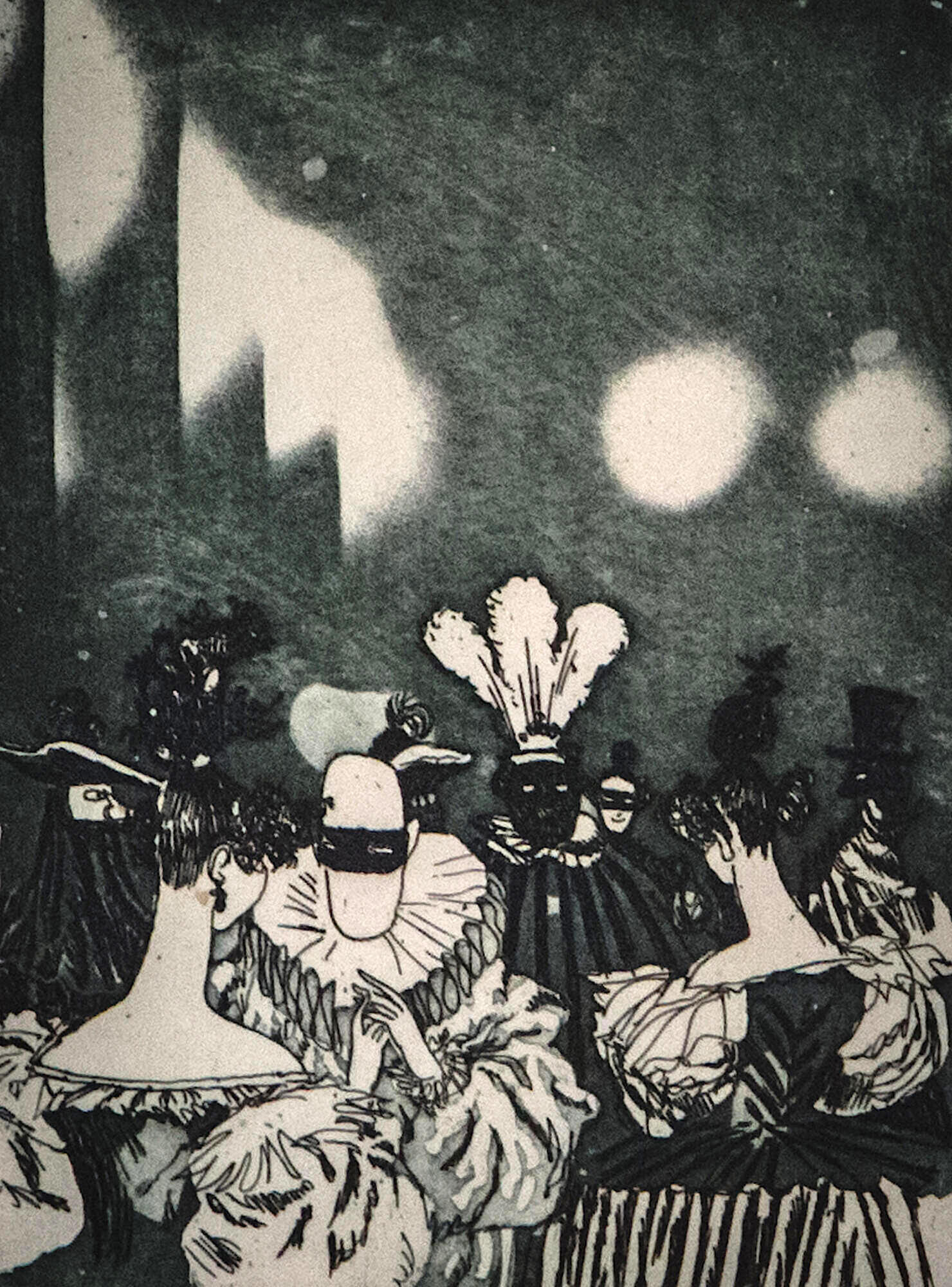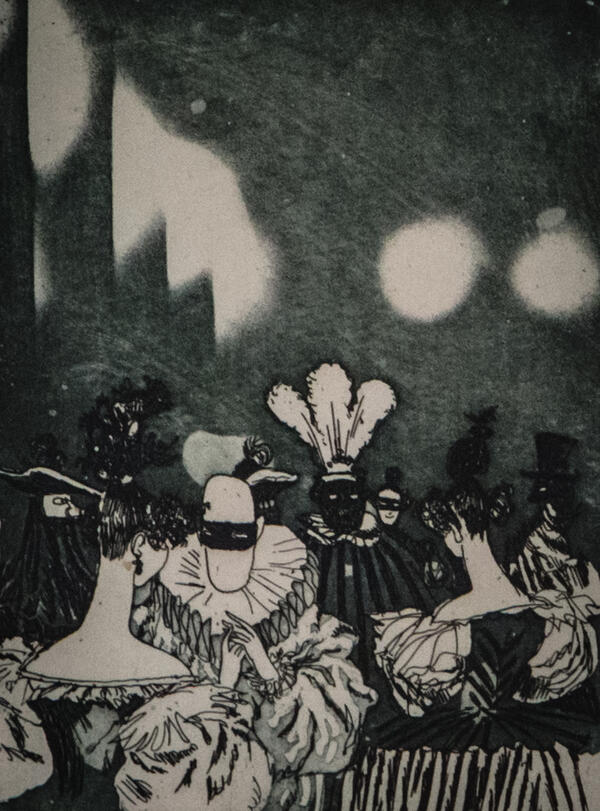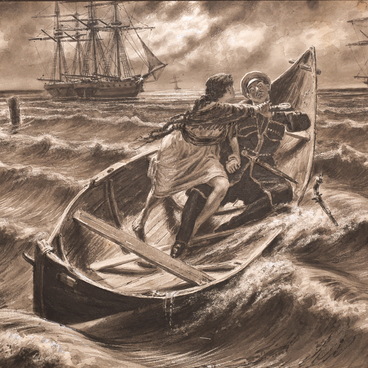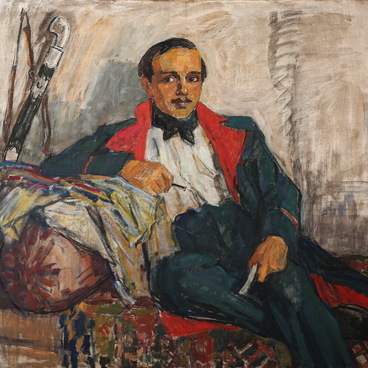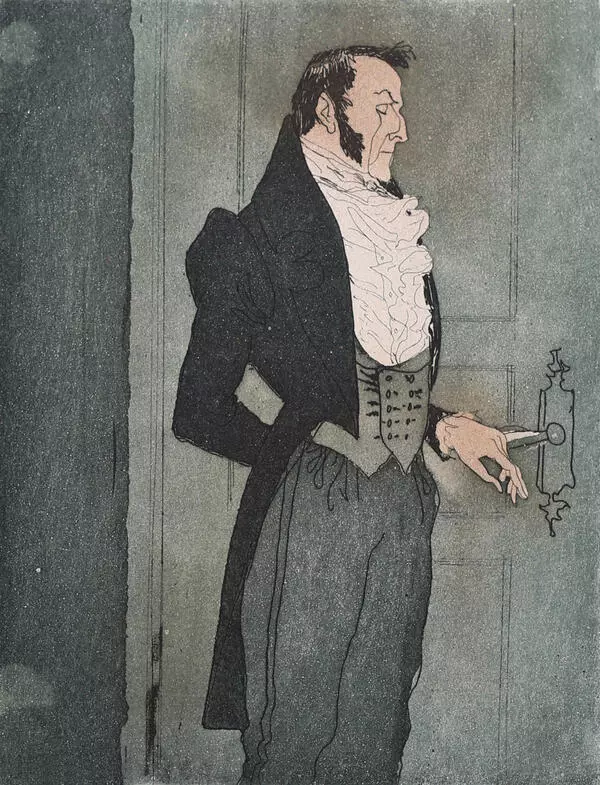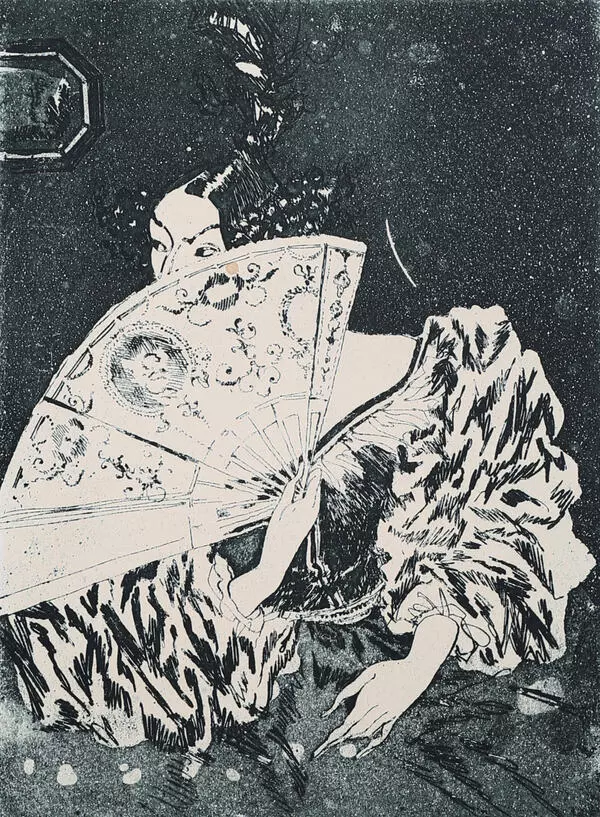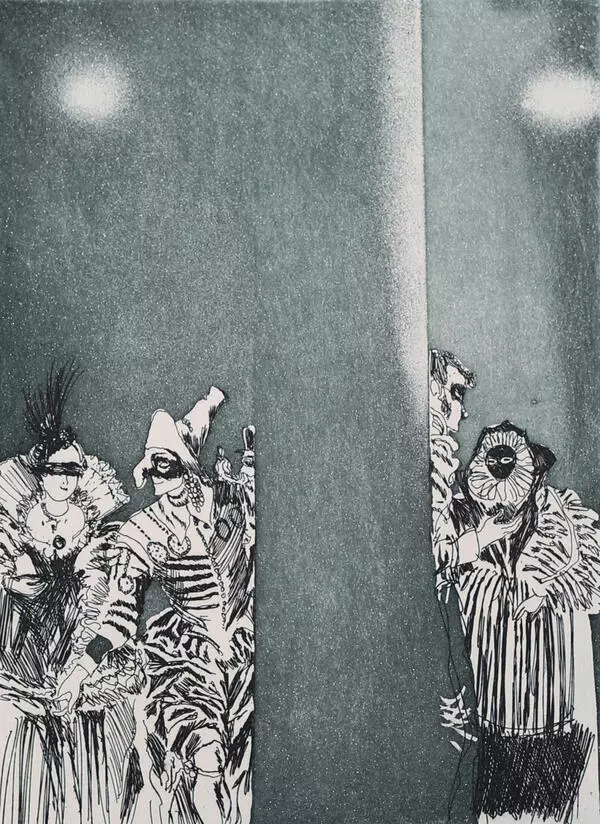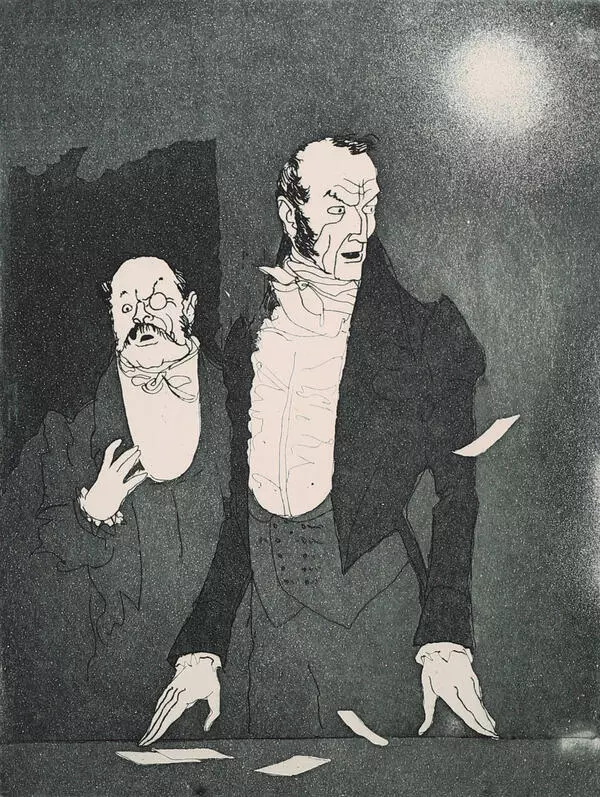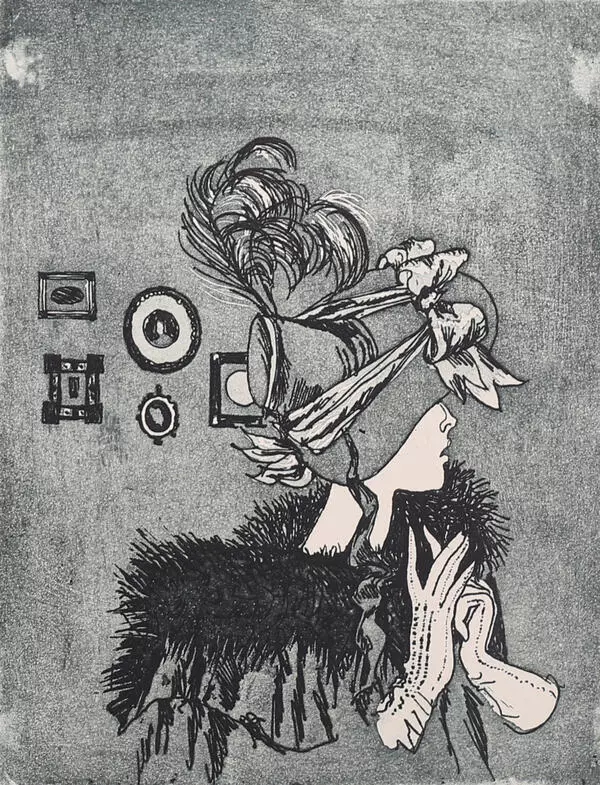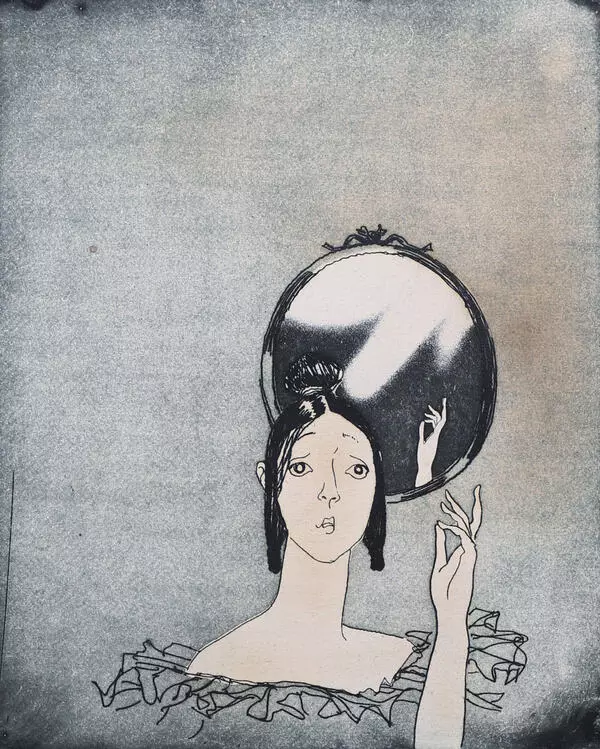The graphic work on display is the second version of the etching “Masks” created by Svetozar Alexandrovich Ostrov in 1988. The graphic artist paid special attention to the clothes of the masquerade guests, their hairstyles and accessories.
The picture shows a ruff collar, which was also called a lacy ruff, or a millstone collar after its resemblance to millstones for grinding grain. In Europe of the 16th — 17th centuries, such collars were popular among the nobility, bourgeois, and officials.
The artist depicted splendid dresses and hats with feathers; in the lower right corner, one of the characters has a top hat on. The character on the far left is wearing the Bauta — one of the most popular Venetian carnival masks. In the 18th century, only citizens of the Republic of Venice were allowed to wear it. One of its varieties was known as Bauta Casanova.
In his etching for the work of Mikhail Yuryevich Lermontov, Svetozar Ostrov traditionally used a vertical composition. He brought the close-up figures near the bottom edge. Their waist-length images are depicted against a neutral background.
The first subscene of the second scene in the play by Mikhail Lermontov begins with a conversation between Arbenin and Prince Zvezdich at the masquerade. The prince claims that “All masks are silly …”, and to that Arbenin replies that masks help upper-class people to hide their identity and become more open:
The picture shows a ruff collar, which was also called a lacy ruff, or a millstone collar after its resemblance to millstones for grinding grain. In Europe of the 16th — 17th centuries, such collars were popular among the nobility, bourgeois, and officials.
The artist depicted splendid dresses and hats with feathers; in the lower right corner, one of the characters has a top hat on. The character on the far left is wearing the Bauta — one of the most popular Venetian carnival masks. In the 18th century, only citizens of the Republic of Venice were allowed to wear it. One of its varieties was known as Bauta Casanova.
In his etching for the work of Mikhail Yuryevich Lermontov, Svetozar Ostrov traditionally used a vertical composition. He brought the close-up figures near the bottom edge. Their waist-length images are depicted against a neutral background.
The first subscene of the second scene in the play by Mikhail Lermontov begins with a conversation between Arbenin and Prince Zvezdich at the masquerade. The prince claims that “All masks are silly …”, and to that Arbenin replies that masks help upper-class people to hide their identity and become more open:
